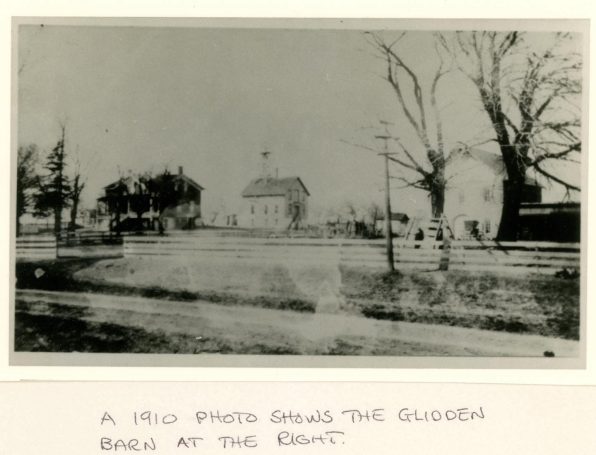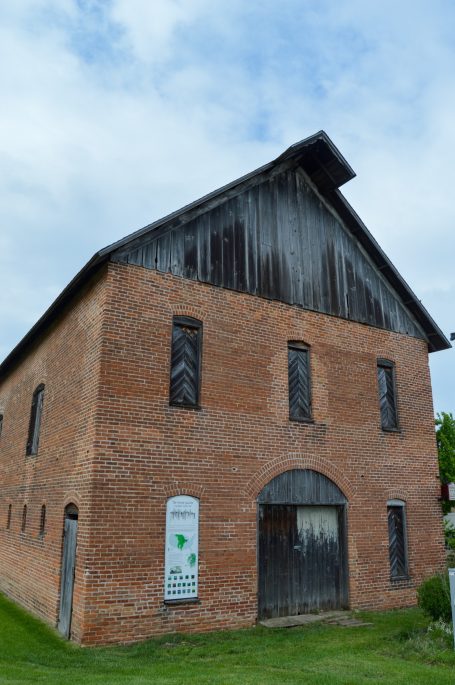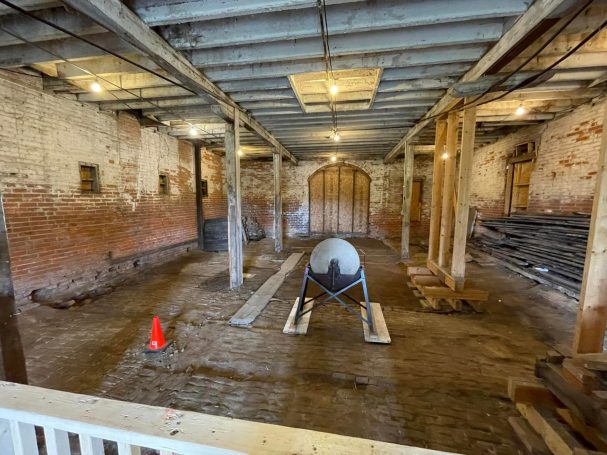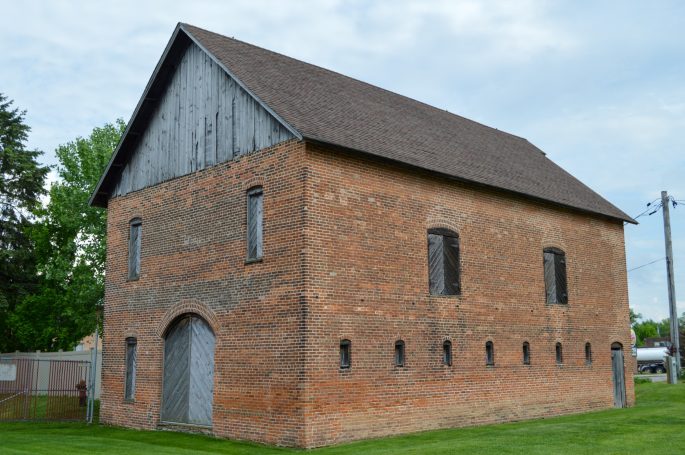The Barn
The Glidden red-brick barn quietly nestled on the Homestead site behind bustling business properties is one of the most historically significant barns in the country, according to architectural preservationist Roger Keys. It is the site where Joseph Glidden invented and initially manufactured the first practical barbed wire that became known as “The Winner.” After the house was built around 1861, Glidden constructed a rather unusual barn made totally of brick. Glidden's first barbed wire manufacturing office was located in the southeast corner of the barn.
The Glidden barn is also significant as one of the oldest barns left standing in DeKalb County. It's architecture reflects the German tradition and is built of local bricks with transverse frame and post-and-beam construction. The foundation is made of locally quarried limestone. There were fourteen eight-paned double-hung windows and seven single-pane windows for luxurious livestock lodging. Originally, there were two large arched entrances, seven stalls, a large haymow, gable, hayhood, and a dirt or wooden plank floor.
The Glidden barn has remained solid throughout its years of usage for livestock, horses, barbed wire manufacture, and storage. It provides us with a priceless link to our past and evokes images of our agricultural roots and the pioneer spirit upon which our communities are based today.

Brick by Brick
The Glidden Homestead is fundraising to make the barn safe and usable for exhibits, programming space, and storage possibilities. Please consider making a donation to support this ongoing project so that this history can be enjoyed by many!
PHASE ONE BARN RESTORATION PLANS
Recent highlights of progress:
- Extensive masonry and foundation repairs, a generous gift from Eleanor Pasquale’s estate
- Tack Room/Joe’s office door re-installed*
- Unsafe stairs demolished/removed*
- Paver path installed at entry to barn for easier access*
*All completed by incredible volunteer efforts
Here's where we need your help:
Please help complete Phase One projects!
--- Install/reinforce support posts, remove concrete flooring, and install wood plank flooring. This will make the barn usable, allowing for programming and interpretive educational space.
This project has a price tag of approximately $14,000.
--- Then, window restoration! (the barn has 14 windows and 7 horse stall “nose” windows!) Currently, the windows do not have glass or sash.
To historically restore these windows will cost approximately $2,000 each.
But -- BONUS! Your generous gift supports local history and is tax deductible to the extent allowed by law. The Joseph F. Glidden Homestead & Historical Center is filed with the Internal Revenue Service as a not-for-profit 501(c)(3) corporation, EIN #36b040683.
Gifts can be mailed to Glidden Homestead, 921 W. Lincoln Highway, DeKalb, IL 60115, with memo "barn restoration," OR can be gifted at the link below.
Please contact Jessi at 815-756-7904 or jessi@gliddenhomestead.org with questions or to learn more! We are so excited to preserve the barn for the future as well as utilizing it to its full potential! This unique barn, DeKalb's special artifact of history, provides us with a priceless link to our past and evokes images of our agricultural roots and the pioneer spirit upon which our communities are based today! Be a donor that helps preserve the Glidden Brick Barn!
© Copyright. All rights reserved.
We need your consent to load the translations
We use a third-party service to translate the website content that may collect data about your activity. Please review the details in the privacy policy and accept the service to view the translations.




